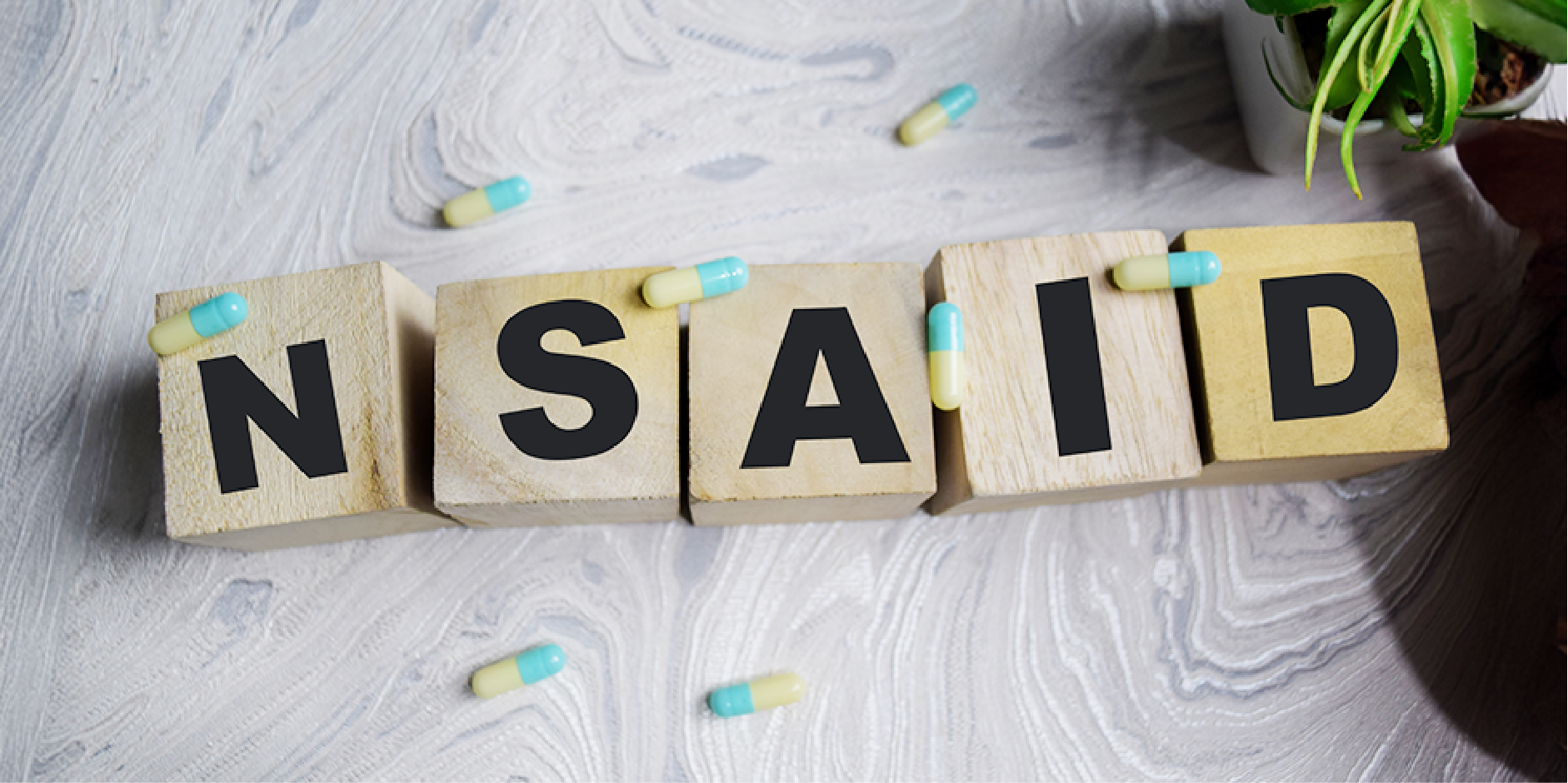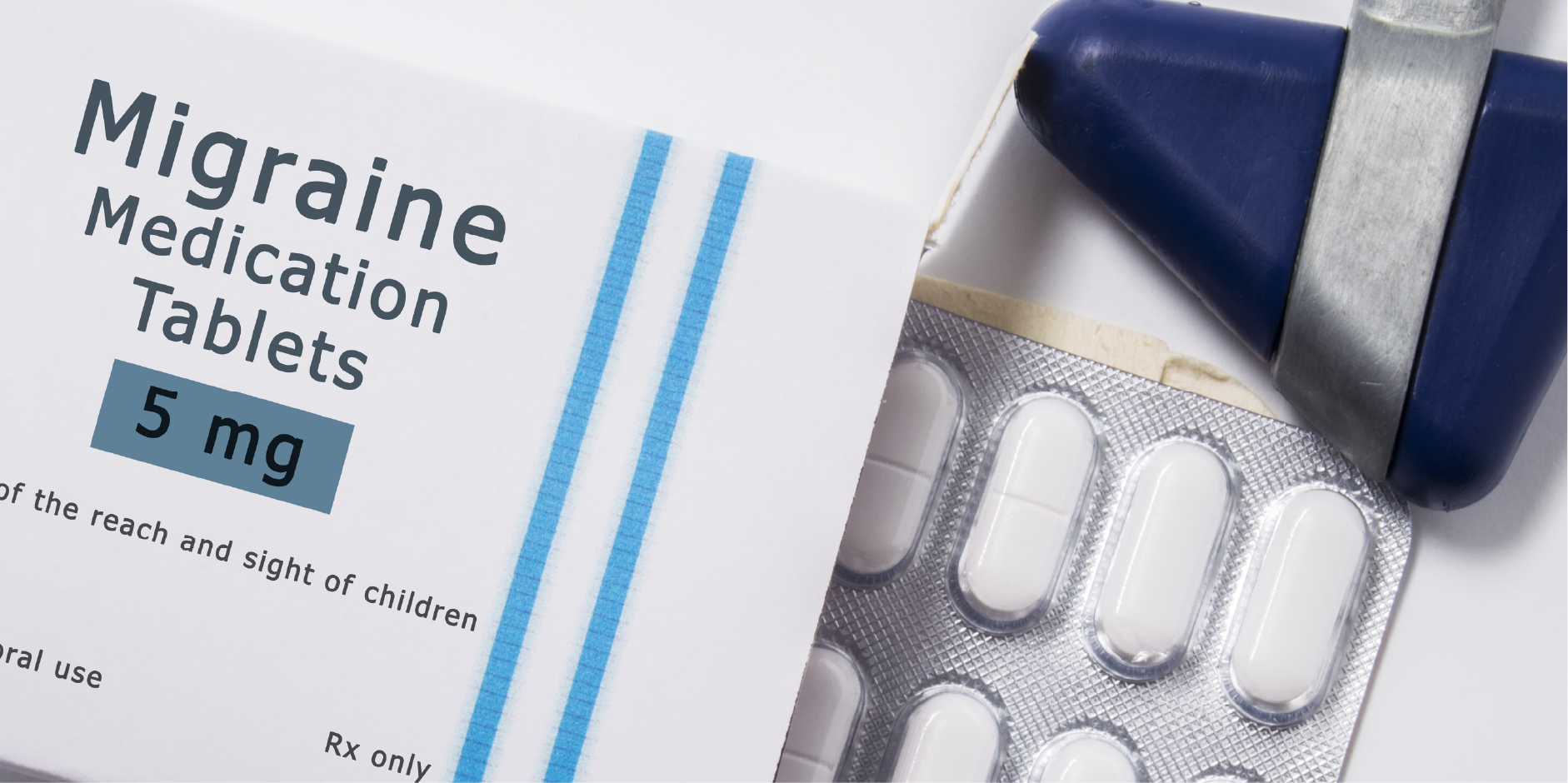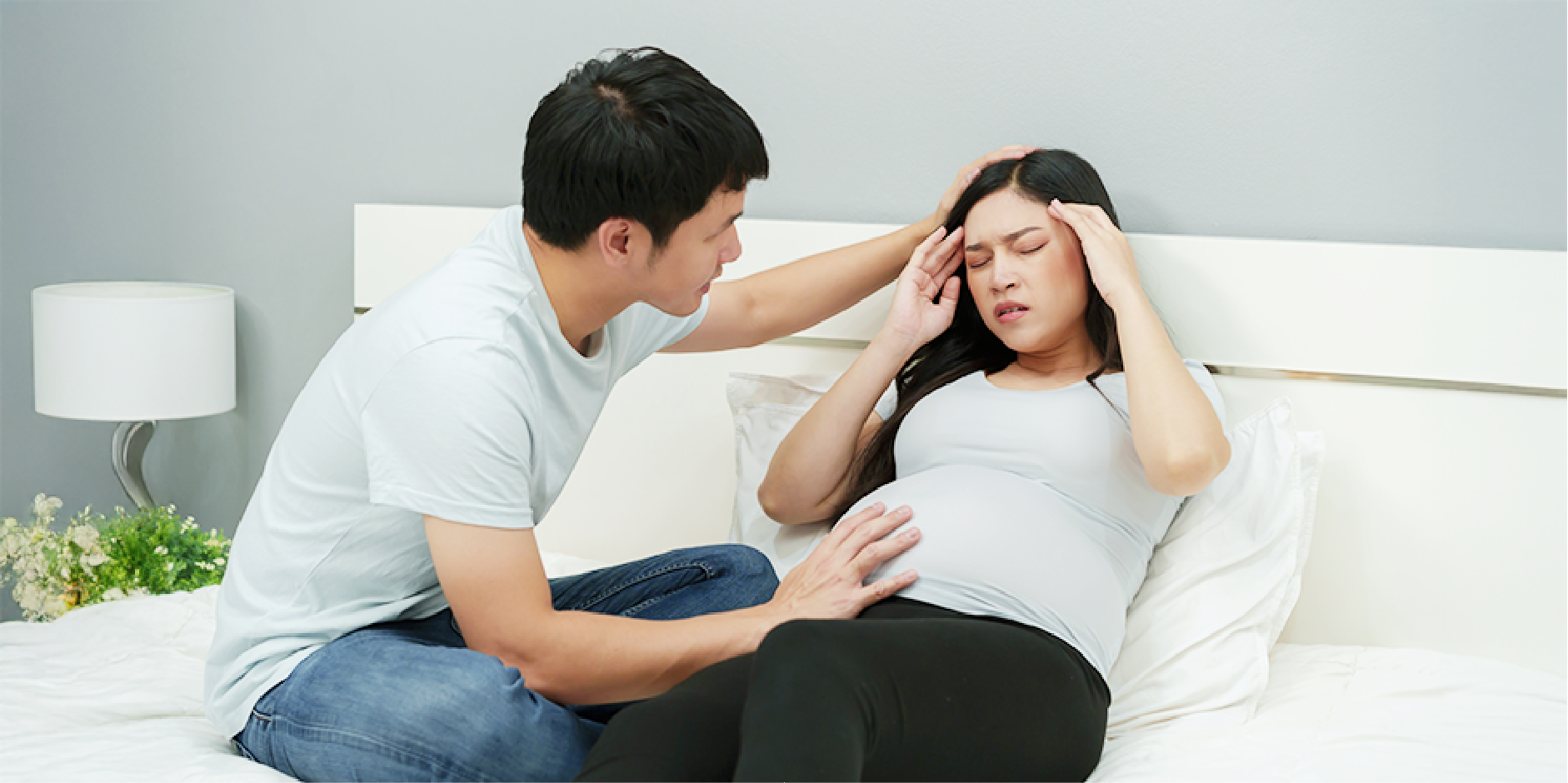Content on this page:
Content on this page:
Evaluation
Therapy decisions are made based on the severity of the headache.
Severity Categories
Moderate
The patient is not completely incapacitated, but daily activities are
greatly hindered by headache.
Severe
The patient’s daily activities are not performed, or they are greatly
altered because of the headache.
Status Migrainosus
The patient has a severe headache that lasts for >72 hours.
Evaluation to Determine if Patient Should Receive Migraine
Prophylactic Treatment
When indicated, prophylactic treatment should be used in addition to
acute therapy.
Indications for Prophylactic Therapy
- Frequency of attacks is ≥4 days per month
- Patients feel that migraines are significantly interfering with their normal daily activities even with acute treatment lasting for ≥4 days per month
- Failure and contraindication of acute therapies
- Overuse
of acute therapy defined as:
- ≥10 days per month for combination analgesics, ergot derivatives, opioids, triptans, and a combination of drugs from different classes that are not individually overused
- ≥15 days per month for Paracetamol, non-opioid analgesics and nonsteroidal anti-inflammatory drugs (NSAIDs) including Aspirin
- Adverse effects from acute therapies
- Patient preference
- Menstrual migraine
- Cost of acute therapy
- Presence of neurologic damage from uncommon migraine types
- Duration of individual attacks >24 hours
 Migraine Headache_Management 1
Migraine Headache_Management 1Principles of Therapy
ACUTE
TREATMENT
Principles of Treatment
The
therapy should be guided according to the frequency, duration and severity of
attacks; associated symptoms, degree of disability, history of treatment,
evidence-based efficacy and patient’s preference. The coexisting medical
conditions should also be considered in migraine therapy. Myocardial
infarction, stroke, epilepsy, and affective and anxiety disorders are common in
patients with migraine. An effective therapy should be established and promptly
used to decrease pain and disability. A non-oral route of administration should
be used in patients who suffer migraines associated with severe nausea and
vomiting. Antiemetics should be used if nausea and vomiting are likely to occur.
Educate the patient about avoiding medication overuse and administer preventive
therapy if necessary. To avoid headaches from drug overuse, simple analgesics
should be taken for a maximum duration of 15 days per month, while combined
analgesics should be taken for a maximum duration of 10 days per month.
Goals of Treatment
The
goals of acute treatment are to abort migraine attacks, treat migraine attacks
rapidly and consistently without recurrence, restore the patient’s ability to
function, minimize the need for back-up and rescue medications, optimize self-care
and avoid adverse effects.
Criteria for a Successful Treatment
The
criteria for a successful treatment are to be pain-free after 2 hours, improvement
of migraine from moderate or severe to mild or none after 2 hours, a consistent
efficacy in two of three migraine attacks, and sustained pain relief defined as
absence of headache recurrence and no further intake of drugs within 24 hours.
Management Strategies
Stratified
Care Strategy
Acute treatment is based on headache severity. This promotes the use of
migraine-specific agents for moderate to severe headaches regardless of the
previous response to other agents.
Stepped
Approach
The use of drugs in a stepped approach is based on a progressive
predetermined way. Safe, effective and inexpensive medications are used as
first-line agents. If the initial agent fails, migraine-specific medication is
then prescribed. For example, commence treatment with an analgesic with or
without antiemetic, then escalate to triptan or 5HT1 receptor agonist.
PROPHYLAXIS
Principles of Prophylactic Treatment
Prophylactic treatment should be considered in patients whose attacks
significantly interfere with daily activities despite acute therapy, with
frequent attacks, with contraindication/unresponsiveness to ≥10 days/month
treatment with ergot derivatives, triptans, opioids, or combination drugs, or
≥15 days/month treatment with non-opioid analgesics, Acetaminophen, or NSAIDs,
with adverse events from acute therapy, or upon patient’s request. The agent
used should be started at a low dose and slowly titrated to higher doses.
Increase the dose until benefits are seen or until limited by adverse events. The
choice of drug agent depends on the following: the adverse effects, presence of
comorbidities, drug interactions, evidence-based efficacy, and patient
preference.
Migraine
prophylaxis is considered successful if there is at least 50% decrease in the
frequency of migraine attacks per month within 3 months. An adequate treatment
trial period of at least 8 weeks at the effective dose or target therapeutic
dose of the drug should be observed to optimize the possibility of therapeutic
response before switching to other prophylactic treatment if there is no
response. The benefits of Calcitonin gene-related peptide (CGRP) antagonists
should be assessed after 3 months of treatment for those with monthly administration
and after 6 months after start of treatment in those with quarterly treatment. Prophylactic
drugs that are effective should be continued for 4-6 months followed by
withdrawal by tapering the dose over 2-3 weeks. Avoid overuse of drugs for
acute treatment (eg analgesics, ergots, triptans).
Goals of Treatment
The
goals of prophylactic treatment are to reduce the severity, duration, and
frequency of migraine headaches; to improve function, the patient’s quality of
life, and decrease disability; to improve response and avoid advancing to acute
therapy; to reduce the cost; to allow the patients to have a sense of control
of their own disease; to prevent the progression to chronic migraine and
occurrence of medication overuse headache; and to reduce the risk of neurologic
damage in patients with hemiplegic migraine, migraine with brainstem aura, and persistent
aura without infarction or migrainous infarction.
Pharmacological therapy
ACUTE TREATMENT
Nonsteroidal Anti-inflammatory Drugs (NSAIDs) including
Analgesics
Example drugs: Aspirin, Ibuprofen, Ketoprofen, Naproxen
Analgesics are the first-line agents for moderate migraine attacks. The
efficacy and tolerability of NSAIDs have been shown in a number of clinical
trials. Paracetamol is recommended as acute treatment for moderate migraine. This
may be considered for patients with acute migraine headaches with
contraindications to other therapies or during pregnancy. Aspirin is
recommended for acute treatment in patients with all severities of migraine. Intravenous
Aspirin with or without Metoclopramide is the first choice in patients with
severe migraine in an emergency situation. For resistant attacks, NSAIDs (oral,
rectal or intramuscular) can be given following, or added to, a triptan. The
use of selective COX-2 inhibitors in acute migraine treatment has been
investigated in clinical trials.
 Migraine Headache_Management 2
Migraine Headache_Management 2Triptans (Serotonin 5HT1 Receptor Agonists)
Example drugs: Eletriptan, Frovatriptan, Rizatriptan, Sumatriptan, Zolmitriptan
The efficacy of triptans ranges in comparative efficacy as shown in clinical trials; however, there are unpredictable individual variations in response to different triptans. They have better efficacy when given at the very onset of the headache or while the migraine pain is at a mild level. These are not safe and effective when administered during the aura. Oral triptans are recommended for acute treatment of migraine with all severities if previous attacks are not controlled by simple analgesics. Their use is limited to a maximum of 9 days/month.
Sumatriptan is available in nasal, subcutaneous (SC) and rectal formulations. The SC Sumatriptan has the fastest onset of efficacy, yet also has the highest recurrence rate; it may also be considered in the treatment of severe migraine. The nasal formulation is not recommended if vomiting precludes oral therapy since its bioavailability depends largely on ingestion. Suppositories should be given to patients with vomiting. The use of Zolmitriptan nasal formulation is considered in patients with severe migraine; it may also be used even if vomiting is already occurring since up to 30% is absorbed through the mucosa. It is confirmed in several trials that patients who fail to obtain adequate relief with one triptan can benefit from another in subsequent attacks. Each triptan should be tried in three attacks before it is rejected. A change in dosage and route of administration should be considered.
Ergot Alkaloids
Ergot alkaloids are used in patients with very long migraine attacks or with regular recurrence due to their lower recurrence rate. Their use has been limited by their high potential to cause medication overuse headache and rebound headache. The intake should be limited to 10 days/month.
Ergotamine
Ergotamine in combination with Caffeine, Butalbital and/or Belladonna are available. Historically, this has been used to treat moderate to severe migraine headaches. This is restricted in patients with very long migraine attacks or with regular recurrence due to its longer half-life and lower recurrence rate. Its use has been limited by high potential to cause medication overuse headache and rebound headache. A suppository formulation is available. This should not be taken concomitantly with any triptan.
Dihydroergotamine (DHE)
Dihydroergotamine is available in rectal, parenteral and nasal formulations. The nasal formulation is effective and safe as monotherapy. This is more appropriately used in severe migraines. This is recommended as treatment for status migrainosus.
5-HT1F Receptor Agonist
Example drug: Lasmiditan
5-HT1F receptor agonist is currently approved for the acute treatment of migraine, with or without aura, in adults. Two randomized, double-blind, placebo-controlled trials demonstrated the effectiveness of Lasmiditan for the acute treatment of migraine.
Antiemetics
Antiemetics have been used in conjunction with migraine medications to control nausea and vomiting. Fair evidence has shown that Metoclopramide may be effective as monotherapy for acute attacks. It has a mild analgesic efficacy in migraine when given orally and higher efficacy when given IV. Domperidone is less sedating than Metoclopramide and also has less risk of extrapyramidal effects. Antiemetics are available in different forms (eg oral, parenteral, rectal).
 Migraine Headache_Management 3
Migraine Headache_Management 3Other Drugs
Opioid Analgesics
Opiates and tranquilizers are not recommended in the treatment of acute migraine. There are no studies that support the effectiveness of opiates.
Calcitonin Gene-Related Peptide (CGRP) Antagonists
Example drugs: Rimegepant, Ubrogepant, Zavegepant
CGRP antagonists are for the acute treatment for patients unresponsive or intolerant to at least two triptans. Rimegepant and Ubrogepant are oral agents approved for the acute treatment of migraine with or without aura. Zavegepant is available as a nasal spray and is approved for the acute treatment of migraine with or without aura in adults. Ubrogepant and Zavegepant are not recommended for the preventive treatment of migraine.
Combination Therapy
There is some evidence that the combination of Sumatriptan and Naproxen is superior to either drug alone. This combination reduces the development of headache recurrence and may be considered for the treatment of patients with acute migraine. Fixed combinations containing Paracetamol, Aspirin and caffeine have been shown to be effective. They are better than single substances or combinations without caffeine. Caffeine should be added as the first choice in treating intermittent, infrequent headaches.
Other combinations:
- Oral analgesic or NSAID with or without antiemetic plus specific anti-migraine drugs, followed by
- Rectal analgesic with or without antiemetic plus specific anti-migraine drugs
Menstrual Migraine
Acute treatment of menstrual migraine is the same as that of
non-menstrual headache. It may be necessary to repeat the treatment since
menstrual attacks may have a longer duration.
Migraine in Pregnancy
 Migraine Headache_Management 4
Migraine Headache_Management 4
Paracetamol may be used if a migraine occurs anytime during pregnancy. In
the second trimester of pregnancy, NSAIDs can be given, however, non-pharmacological
management is preferred. Biofeedback, relaxation, transcutaneous supraorbital
nerve stimulation and physical therapy may be tried. Ergotamine and
dihydroergotamine are contraindicated during pregnancy.
Status Migrainosus
Status migrainosus is usually a severe and debilitating migraine
headache that requires aggressive treatment. This is often caused by medication
(eg analgesic) overuse. The treatment may start with IV fluids and electrolyte
replacement if indicated. Some patients may need hospitalization for
rehydration, control of vomiting by giving antiemetics and abortive therapy.
Abortive therapy includes parenteral triptan without ergot and/or
Dihydroergotamine 8-12 hours after the last dosage of triptan. Ketorolac IM/IV
or sodium valproate can be given if Dihydroergotamine or triptan is
contraindicated or ineffective.
PROPHYLAXIS
Prophylactic Treatments
Antiepileptic Drugs
Valproic acid, Divalproex sodium and Topiramate have been shown to be
effective in preventing migraines. Their efficacy is comparable with
Metoprolol, Propranolol and Flunarizine. Topiramate has been considered as one
of the drugs of first choice for migraine prophylaxis. Sodium valproate is used
as a second-line prophylactic agent for chronic migraine.
Antidepressants
Example drugs: Amitriptyline, Nortriptyline, Protriptyline,
Venlafaxine
Antidepressants are useful in patients with coexisting depression or
insomnia. However, not all antidepressants are effective. Amitriptyline has
been studied more than any other antidepressant. This has been shown
statistically to be effective in preventing migraines. This is recommended as a
first-line agent for chronic migraine prophylaxis. Venlafaxine may also be
recommended as a first-line agent for migraine prophylaxis. Nortriptyline and
Protriptyline are considered second-line agents for chronic migraine
prophylaxis in patients refractory to the first-line agents. Fluoxetine has
been studied with inconclusive evidence of efficacy.
Beta-Blockers
Example drugs: Propranolol, Metoprolol, Timolol
Beta-blockers are useful in patients with coexisting essential tremors,
anxiety and/or panic attacks. These are not recommended for migraine prevention
in patients >60 years and in smokers. Propranolol, Metoprolol and Timolol
have been shown to be consistently effective in preventing migraines. Propranolol
is recommended as a first-line agent for chronic migraine prophylaxis. Atenolol,
Bisoprolol and Nadolol have shown limited effectiveness.
OnabotulinumtoxinA (Botulinum toxin A)
OnabotulinumtoxinA is currently approved for prophylaxis of chronic
migraine headaches. This is given approximately every 12 weeks as multiple
injections around the head and neck. This should be discontinued if the
frequency of headache days per month did not reduce by at least 30% after two treatment
cycles or if their condition changed to episodic migraine for three consecutive
months.
Calcium Channel Blockers
Example drugs: Flunarizine, Verapamil
Flunarizine has shown efficacy in migraine prophylaxis in several
studies. Flunarizine has been recommended for prophylaxis. This is a treatment
option for women of childbearing age. Verapamil may be an alternative for
chronic migraine prophylaxis in patients who are refractory to the first-line
agents.
Calcitonin Gene-Related Peptide (CGRP) Antagonists
Example drugs: Eptinezumab, Erenumab, Fremanezumab, Galcanezumab
CGRP antagonists act by binding to and
subsequently inhibiting the CGRP receptor or ligand. They are the first-line
option for migraine headache prophylaxis as per the 2024 American Headache
Society. Atogepant and Rimegepant are oral CGRP antagonists approved for the
preventive treatment of episodic migraine. While Eptinezumab, Erenumab,
Fremanezumab, and Galcanezumab are human monoclonal antibodies acting as CGRP
antagonists. These are currently approved subcutaneous injectables for episodic
and chronic migraine prophylaxis who have at least four migraine days per month.
These are effective for patients who failed prior prophylactic therapy and in
patients on concurrent oral prophylactic therapy. These have been shown to
reduce the number of migraine or headache days and the number of days using
acute medications and improve disability. There is no need for gradual dose
titration unlike oral prophylaxis. These should be discontinued if the
frequency of migraines did not reduce by at least 50% in episodic migraine and at
least 30% in chronic migraine.
CGRP antagonists are indicated when
patient is ≥18 years old and diagnosed with migraine with or without aura and
intolerant or unresponsive to a 6-week trial of at least two of the following:
Beta-blocker (Atenolol, Metoprolol, Nadolol, Propranolol, Timolol), Divalproex
sodium/ valproate sodium, serotonin-norepinephrine reuptake inhibitor
(Duloxetine, Venlafaxine), tricyclic antidepressant (Amitriptyline,
Nortriptyline), or Topiramate and with at least moderate disability or diagnosed
with chronic migraine and intolerant or unresponsive to a 6-week trial of at
least two of the following: Beta-blocker (Atenolol, Metoprolol, Nadolol,
Propranolol, Timolol), Divalproex sodium/Valproate sodium, serotonin-norepinephrine
reuptake inhibitor (Duloxetine, Venlafaxine), tricyclic antidepressant (Amitriptyline,
Nortriptyline), or Topiramate or intolerant or unresponsive to a minimum of two
quarterly injection of OnabotulinumtoxinA.
Nonsteroidal Anti-inflammatory Drugs (NSAIDs)
Nonsteroidal anti-inflammatory drugs may be considered in patients in
need of migraine prophylaxis. These should be used with caution, as prolonged
use (≥15 days/month) may cause medication overuse headache.
Other Drugs
Angiotensin Receptor Blockers
Candesartan has shown limited effectiveness in preventing migraines.
This can be considered as an alternative for chronic migraine prophylaxis in
patients refractory to first-line agents.
Serotonergic Antagonists
The use of Methysergide is limited to short-term prophylaxis (maximum
of 6 months) because of adverse effects and is also associated with severe
rebound headache. Pizotifen is not recommended because of its poor efficacy and
severe side effects.
Triptans
Example drugs: Frovatriptan, Naratriptan, Zolmitriptan
Frovatriptan should be considered as a prophylactic treatment in women
with perimenstrual migraine 2 days prior to up to 3 days after bleeding starts.
Herbal Treatments/Vitamin/Mineral Supplements
Although the level of evidence is low, the following have been
recommended for migraine prophylaxis due to fewer side effects and modest
efficacy:
- Co-enzyme Q10: One randomized placebo-controlled trial has shown that co-enzyme Q10 has decreased migraine attack frequency with good tolerability
- Magnesium
- Riboflavin
Hormone-Related Migraine
Prophylaxis should be tried for a minimum of three cycles at maximum
dose before it is deemed ineffective. Triptans (eg Frovatriptan, Naratriptan,
Zolmitriptan) have been studied in clinical trials of short-term prophylaxis of
menstrual migraine. There are limited studies available on the use of ergot
alkaloids as cyclic prophylaxis. Hormones are considered supplements in
patients with menstrual migraine. In a patient with an intact uterus and
menstruating regularly, progestogens are not necessary. Patients suffering from
menstrual migraine can benefit from the combined hormonal contraceptives (CHC),
progestogen-only oral Desogestrel, subdermally-implanted Etonogestrel and
injectable depot progestogen. The use of combined hormonal contraceptives is
contraindicated in migraine with aura and migraine treated with ergot
derivatives.
Migraine in Pregnancy
Most women with migraine improve during pregnancy, hence prophylaxis is
not usually needed. If prophylaxis is necessary, Magnesium and Metoprolol are
recommended. Propranolol has the best safety profile. Amitriptyline in the
lowest effective dose can also be used.
Nonpharmacological
Patient Education
Individuals
need to understand that migraine headache is a physiological disorder with
genetic predisposition or a primary brain disorder with no structural lesion in
the brain. The patients are predisposed to blood vessel and inflammatory
responses in the brain, which cause pain. The patients need to be educated
about controlling acute attacks and preventive therapy. The patients should be
made aware of the potential for medication-induced headache (manifested as
chronic daily headache), which can be caused by the overuse of analgesics and
acute migraine drugs. If treating acute headache >2x/week, the patient
should consider prophylaxis treatment to prevent medication-induced headache. When
creating a management plan, involve the patient in the decision-making process.
Discuss therapeutic options including risks versus benefits and
medication-induced headache. The patient should be encouraged to keep a
headache diary or calendar to record the frequency, duration and severity of
each headache attack, take note of any resulting disability and treatment used
for the headache and its effects (including adverse reactions to the
medication).
 Migraine Headache_Management 5
Migraine Headache_Management 5Rescue Medication
Clinical consideration to self-administered rescue medication for patients who have severe migraines that do not respond to other treatments. This may consist of an opioid or a Butalbital-containing combination that the patient may use at home. This enables the patient to administer pain relief without the need for a physician clinic or emergency department visit. The patient must be educated on the appropriate use of rescue medication. There should be an adequate trial of preventive therapy because clinical benefit manifests after 2-3 months.
Lifestyle Modification
Predisposing Factors Recognition and Trigger Avoidance
Patients should be educated about the many influences that can lead to a migraine attack. Identify and differentiate between predisposing and precipitating or trigger factors. Some predisposing factors cannot always be avoided but can be treated. The factors triggering an acute attack in one patient may not trigger an attack in another patient. Predisposing factors are stress, depression, anxiety, menstruation, menopause, and head or neck trauma. Most patients benefit from adequate hydration, regular eating patterns and sleep schedules, regular aerobic exercise and stress reduction. Patients also prefer to stay in a dark and quiet room during the attacks.
Behavioral and Physical Methods for Migraine Prophylaxis
Behavioral and physical methods are appropriate for patients who prefer non-pharmacological methods, who do not respond to prophylactic medication, who cannot tolerate or in whom pharmacologic agents are contraindicated, those with history of medication overuse, pregnant, lactating or women planning to get pregnant and patients who have significant stress or deficient stress-coping skills. These may combine behavioral or physical treatments with pharmacotherapy if necessary. These have been shown to provide more benefits than either modality alone.
Goals of Therapy
The goals of these therapies are to reduce the frequency and intensity of headache, to reduce reliance on pharmacotherapy, to reduce disability caused by headache, to increase personal control over headache, and to decrease headache-related distress and psychological symptoms.
Relaxation Training, Stress Reduction, and Coping Strategies
Relaxation training, stress reduction and coping strategies are considered first-line treatments where a specific indication exists (eg stress, anxiety). Yoga and meditation are said to enhance stress management. These would train patients to control muscle tension, use mental relaxation and/or visual imagery. These has been found to be somewhat effective in preventing migraines.
Biofeedback Therapy
Standard thermal and electromyographic (EMG) biofeedback training are usually the techniques of choice. Thermal biofeedback combined with relaxation training may be somewhat effective. This should be conducted by a trained healthcare provider. It is time-consuming and requires patient commitment.
Cognitive-Behavioral Therapy (CBT)
Psychotherapeutic intervention’s goal is to teach skills to identify and control stress and minimize its effects. Hypnotherapy has also been used. Cognitive-behavioral therapy may be considered somewhat effective.
Physical Therapy
Physical therapy may be useful where a specific condition exists (eg migraine due to neck dysfunction). Improving physical fitness may decrease susceptibility to migraine. This may be beneficial in the therapy of chronic migraine in patients with constant muscle tension.
Acupuncture
Acupuncture is done when fine needles pierce skin at specific “pressure points” to relieve pain. It is believed that endorphins are released into the patient’s system, which relieve pain. Consider a course of acupuncture over 5 to 8 weeks for patients who are unresponsive or intolerant to beta-blockers, antiepileptics and antidepressants. Controlled studies have produced mixed findings for the effectiveness of acupuncture.
 Migraine Headache_Management 6
Migraine Headache_Management 6Neuromodulation Techniques
Examples: Transcutaneous electrical nerve stimulation (TENS), remote electrical neuromodulation (REN), non-invasive vagus nerve stimulation (nVNS), single-pulse transcranial magnetic stimulation (sTMS)
Neuromodulation techniques involve stimulating the nervous system centrally or peripherally with the use of an electric current or a magnetic field. These are options for patients with poor response, intolerance or contraindications to drug treatments or who prefer non-pharmacologic treatments. Single-pulse transcranial magnetic stimulation and electrical trigeminal nerve/supraorbital nerve stimulation are recommended for acute and preventive treatment of migraine. Transcranial magnetic stimulation may be used as a second-line modality for patients with episodic migraine with aura who are unresponsive or intolerant to first-line therapy with triptans or other drugs. Transcutaneous supraorbital nerve stimulation was found to be beneficial for patients with episodic migraine. Non-invasive vagus nerve stimulation is recommended for the acute treatment of migraine.
